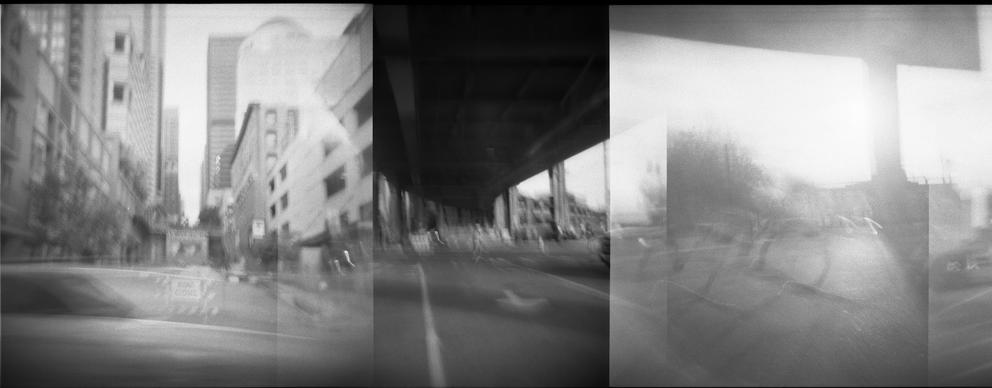This time last year, pedestrians were walking atop the Alaskan Way Viaduct, sharing one last goodbye with the soon-to-be-torn-down structure.
Like other Seattleites, I was thinking about the Viaduct’s slow disappearance from the Seattle landscape. What would be its legacy when it was finally gone? During that time, my toddler daughter was starting to get more excited about exploring her small-kid world with a toy camera, and we brought it with us most places we went. I loved watching her get excited to make pictures of whatever sparked her curiosity.
I was inspired to capture the same feeling of joy my daughter was having for making pictures. That’s how I came up with the idea to explore the Viaduct’s demise with a toy camera and inquisitiveness.
I tracked down my decades-old Holga 120N film camera and a bag of expired film rolls from the corner of a closet. I started visiting the spaces around the Viaduct after work and on weekends. By day I created images of city leaders and social issues for Crosscut readers, but after hours I created for myself. I was captivated by reflections in puddles around the Viaduct, pondered shapes on cracked cement supports and climbed on top of debris piles.
When others saw me with this small plastic camera — whether crouched in a crosswalk looking straight up or hanging the camera over a ledge — nobody took me seriously. Many times when people see a photojournalist with a bulky camera, they inherently change the way they operate in that environment. The toy camera felt like an invitation to be ignored as a photojournalist. I loved that, too.
In addition to the flimsiness of the camera, the film was expired, creating a sense of artistic uncertainty. It also freed me to explore without too much pretense, because there might not be anything on the film when it was processed anyway.
This allowed me to concentrate on capturing eerie memories during the months when heavy equipment slowly chewed apart this iconic structure. There was certainly a beauty in watching it disappear.













